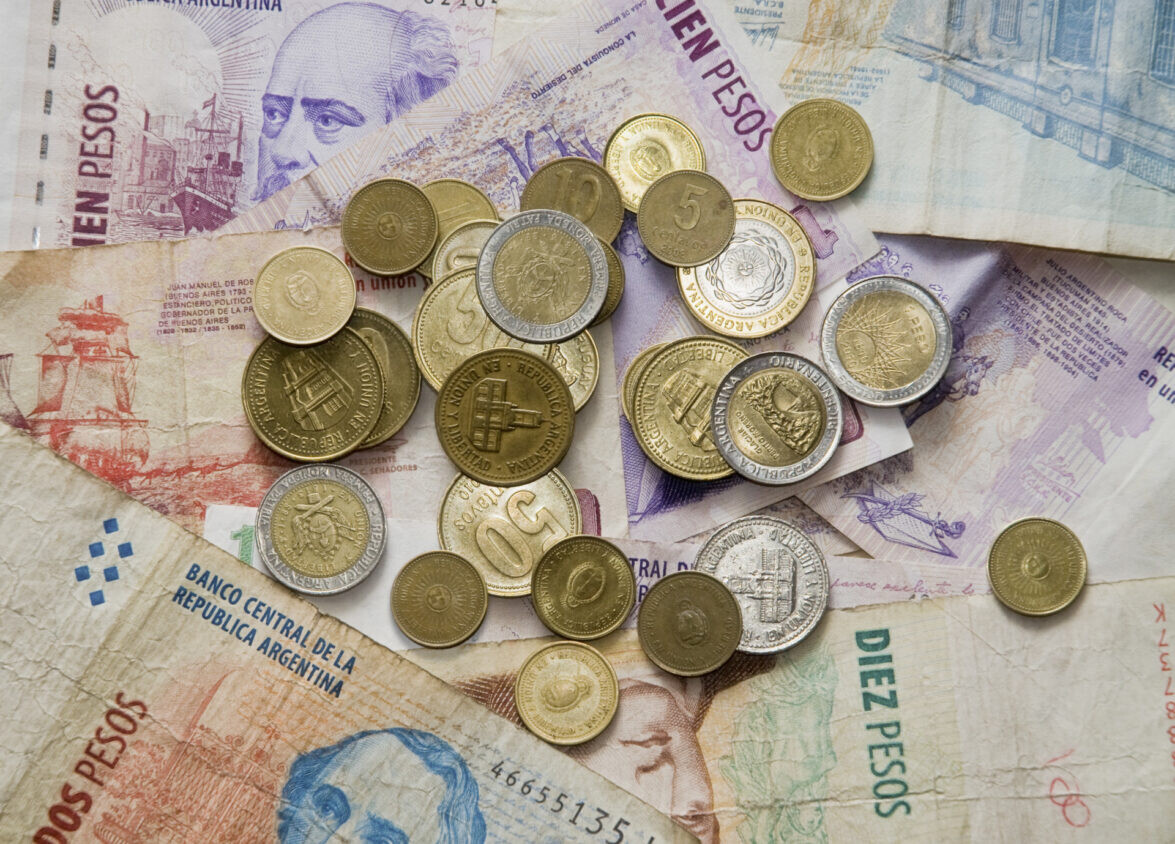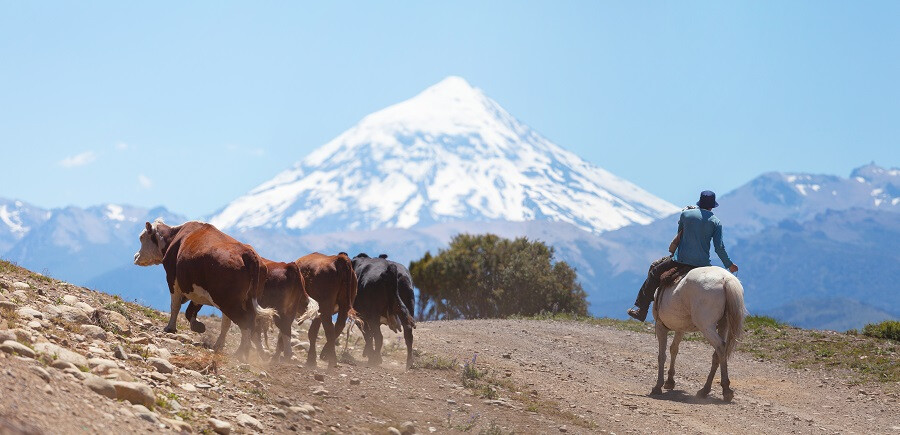Profits in the pampas
The country’s populist economic model is unsustainable and reform is inevitable. When it comes, Argentina's enormous potential will be fully unleashed. Buy now before the bounce...

Argentina’s economy is heading for a crisis. Annual inflation is above 100% and rising; the government runs an unsustainable fiscal deficit; farming, which is the main export sector, is suffering the worst drought on record, while general elections this year are causing political instability.
With such challenges and pessimism, no wonder local stocks are suffering. At free market exchange rates – more on that later – the local Merval stock index is down 60% in US dollar terms since its 2018 high. That’s tough news for existing shareholders but a great opportunity for us. Because, despite its short-term challenges, Argentina’s economy has incredible mid-term prospects. A rebound in its world-class energy, mining and agricultural resources will kick-start an economic boom in 2024. The country also has incredible potential in tech and finance. Most importantly of all, the looming showdown with economic reality is about to impose a financial logic on the Argentina economic model that will finally allow the country to fulfil its potential. The potential rewards for brave investors that get in now are massive.
Crisis
We shouldn’t downplay the severity of the economic challenges currently facing Argentina. In fact, they are part of the bullish story because the looming crisis is the only reason we can buy in cheap. On the street in Argentina the most visible problem is inflation. Paying for meals, which are delicious and cheap when priced in sterling, requires wads of Argentine pesos. Back in 2006 the cheapest pizza from a downmarket pizza chain called Ugis, cost 6 pesos - it now costs 1,000 pesos.
Ramiro Blazquez, chief economist at BancTrust, a UK-headquartered investment bank that has a brokerage in Argentina, believes inflation is just a consequence of the fiscal deficit. “Argentina’s fiscal deficit, if you combine the accounts of the Central Bank and the Treasury, come to 9% of GDP. For a country with a history of default – and therefore a low tolerance for debt – it is a huge deficit that nobody is willing to finance. So, the only way the government can fund the deficit is by capital controls that trap liquidity in Argentina. That is why you have an unrealistic official exchange rate that overvalues the peso. The Central Bank also prints money to fund the deficit which feeds inflation.” So, while the official exchange rate stays fixed at 210 Argentine pesos to the dollar, the unofficial one is more than 500. No doubt by the time this goes to print that number will have gone up.

The current government, which is coming to the final months of its administration ahead of elections in October, is limping along with increasingly desperate measures to prevent the economy completely imploding on its watch. One way it does that is by introducing special exchange rates to encourage specific exporters to earn much-needed hard currency. In total there are more than ten different rates, such as ‘malbec dollar’ and the ‘soy dollar’. Needless to say, this just increases distortions in the economy, with exporters making business decisions based on the next artificial exchange rate, rather than real market drivers.
To be fair to this government it hasn’t been very lucky. The pandemic pushed up inflation around the world, while Argentina has been hit by three years of drought, culminating in one this year that was the worst on record. The drought has wiped $25billion off agricultural exports, which are the country’s most important hard-currency earner, and the overall impact on the sector equates to a 2.5% hit to GDP.
Incredible wealth
Argentina is immense. If you put Argentina on its side it would stretch from Portugal to the Russian border. But this vast landmass is underpopulated. It is on a par with India - just 15% smaller – but whereas 1.4 billion Indians have to share its territory, Argentina’s riches could be divided between 45 million. If Argentina managed its resources properly its citizens could be as wealthy as Qataris.
The low population density, matters for investors because it means that all the commodities can be developed for export. Argentina’s best-managed natural resource is its vast pampas. This enormous stretch of fertile land is one of the world’s major breadbaskets and is well-worked by an incredibly efficient farming industry. The rains began to fall again in the last few weeks and experts believe that the drought, which was exacerbated by the La Niña weather phenomenon, is now over. Agricultural exports are expected to bounce back next year. Moreover, Argentina is also a leading agritech innovator, it has pioneered high-tech GM seeds that are sold around the world, and it is now developing new variants of its major cereal crops – soy, wheat and corn – that will be more resistant to dry periods. And climate change, which may make the pampas slightly drier, could also increase rainfall and heat in the country’s vast, barren southern region of Patagonia, making it the world’s fastest-growing agricultural frontier over the next few decades.
Next up you have oil and gas, which is found in Vaca Muerta – the world’s second-largest shale gas reserve, and fourth-largest shale oil deposit. Argentina had a long history of conventional oil and gas production, which started to decline at the start of this century. Then it found Vaca Muerta, which took about 15 years to develop because unconventional deposits require a specific type of technology and service ecosystem that have proved difficult to recreate outside of the US. Now Vaca Muerta is booming. The cost of drilling an unconventional well, which three-times as expensive as the US just five years ago, has now come down to similar levels.
The only thing holding Vaca Muerta back is the lack if pipelines to transport all of the production. Pipelines are being built as we speak, with provincial and national politicians in Argentina’s federal system granting permits quickly because they all want a share of the taxes. An existing regional pipeline network can export energy to Chile, Uruguay and Brazil. However, bigger profits will come with planned LNG export terminals that will allow Argentina to sell gas to the highest international bidder. Argentina is particularly fortunate that its summer – ie when it consumes the least gas and has the most available to export – coincides with the high-price season of the northern hemisphere winter. The impact on the Argentine economy will be huge. This year Argentina’s energy import bill was $6billion, by 2025 that will turn into an energy surplus of $6billion – so a $12billion swing in Argentina’s favour.

Then there is mining. At present the industry accounts for just 2.5% of Argentina GDP, compared to a share of between 15% in neighbouring Chile, the world’s number one copper producer. Geologists have always suspected that Argentina, which has a much wider chunk of the Andes than Chile, must also have lots of copper and that has been backed up by a string of mega discoveries. Huge copper deposits have been identified by Lundin Mining in San Juan province, which is about half way up Argentina’s Andes, and by First Quantum Minerals, further north in Salta. These are serious companies that have built and operated major copper mines elsewhere in the region. Mega copper mines aren’t being built yet in Argentina because of the economic conditions described earlier. They are capital intensive projects that need billions of dollars of investment, which is difficult to raise to develop a mine in a basket case economy. However, as the copper price goes up – and/or the new Argentine government instils some measure of economic order – they will get built. Put simply, the world needs Argentine copper to electrify the global economy, while Argentina needs the dollars that mining will bring in investment and export earnings.
One part of the mining industry that is already booming is lithium. A spate of recent deals have seem hundreds of millions of dollars invested in bringing new lithium production online. Along with Chile and Bolivia, Argentina is part of the ‘lithium triangle’ that holds more than 50% of global reserves of the white metal that is essential for battery technology. The lower amounts of capital needed, plus the limited availability of lithium around the world, means that investors are prepared to commit capital now. As more lithium mines get built and then as they are joined by copper mines further down the line, Argentina will benefit from the macroeconomic boost that has been so marked in other miners like Peru and Chile.
The final Argentine resource worth highlighting is its people. That’s a horribly cliched line to write because politicians across the region – and perhaps the world - always claim that their inhabitants are the country’s greatest asset. But Argentina has the best public education system of any large Latin American country and the result is a booming tech sector. The country has more unicorns per capita – privately held tech companies worth more than $1billion – than any other country in the region. It is also a Latin American leader in biotech, agritech, aerospace and nuclear medicine. This knowledge economy is also reflected in the growing regional hubs – known as shared service centres now based in Argentina. For example, PwC, ExxonMobil and JP Morgan all have their Latin American knowledge hubs in Latin America. Argentina is effectively exporting its people without them leaving the country and that high-value service industry diversifies the economy, making it a safer bet than a simple commodity exporter.
Economic reform
Most of the economic drivers mentioned so far are happening, or will happen, regardless of Argentine politics. One reason is that Argentina’s 1994 constitution gave power over natural resources to the provincial governors. That is positive because these local politicians, who often have links to businesses in their area, are keen to see projects built. However, the national government still controls key economic policy, such as the exchange rate, export taxes and import quotas, which impacts projects. If Argentina could implement rational economic policy, then its natural resources could be developed more quickly and profitably.
The right of centre parties seem very likely to win October’s general election and govern in some form of coalition. But we don’t want to base an investment on an election that even locals can’t predict. Far more substantial is a line first told to me by Daniel Marx, a former finance minister turned investment banker. “In the last few months, we have seen local investors ask about investment opportunities. This isn’t just an electoral trade - Argentina is on the verge of running out of money and that will force change regardless of whoever comes to power.” In an ideal world a new government comes to power and with its mandate is able to convince Argentine voters to take the considerable short-term pain that adjustment, such as reducing state expenditure, is bound to cause. That government would also be able to persuade markets to lend to Argentina on the basis of these reforms. In the worst-case scenario, the Argentine economy descends into crisis with possible hyper-inflation before an emergency administration forces the painful economic measures. Either way – and apologies to my Argentine friends if this sounds brutal – but economic change is coming because the current model is unsustainable.
One big winner of economic rationalisation would be the banking sector. At present, local banks are just used for transactions. They are restricted in how much US dollar assets they can hold, while nobody in their right mind wants to save in pesos. As a result, the economy is starved of long-term credit with almost no mortgages. Credit growth is rocket fuel for an economy and when Argentine banks are finally able to loan serious money to homebuyers and consumers, it will kickstart retail sales and the property market. A functioning financial market would also encourage some of the $400billion held by Argentines outside their own country – 20% if American dollars sitting outside the US are in Argentinean hands – to return to the country, giving another boost to local assets.
Argentina’s short-term outlook is terrible. And that’s why the market is cheap. Because of all the market distortions, valuing Argentine shares is tricky. “One way of looking at the local Argentine market is just taking a look at the broad index (MERVAL) and translating it to USD at the “free” blue-chip swap rate”, says Francisco Schumacher, a research director at the Argentine office of BancTrust. “You can see that the MERVAL averaged around $1,100 between October 2015 and August 2019”. This was when the previous, market-friendly government was in power. “A repricing back to those average levels would imply an upside of 75% relative to current levels of $628.”
Given all the challenges facing the country a lower stock market seems fair. What’s more, things will get worse before they get better. But the incredible amount of productive wealth in Argentina means its medium-term prospects are very good. It’s impossible to time this type of recovery story perfectly. But if you believe the world will consume more energy, food and tech in the coming years, then back Argentina.
A version of this article first appeared in MoneyWeek on the 28th of April 2023